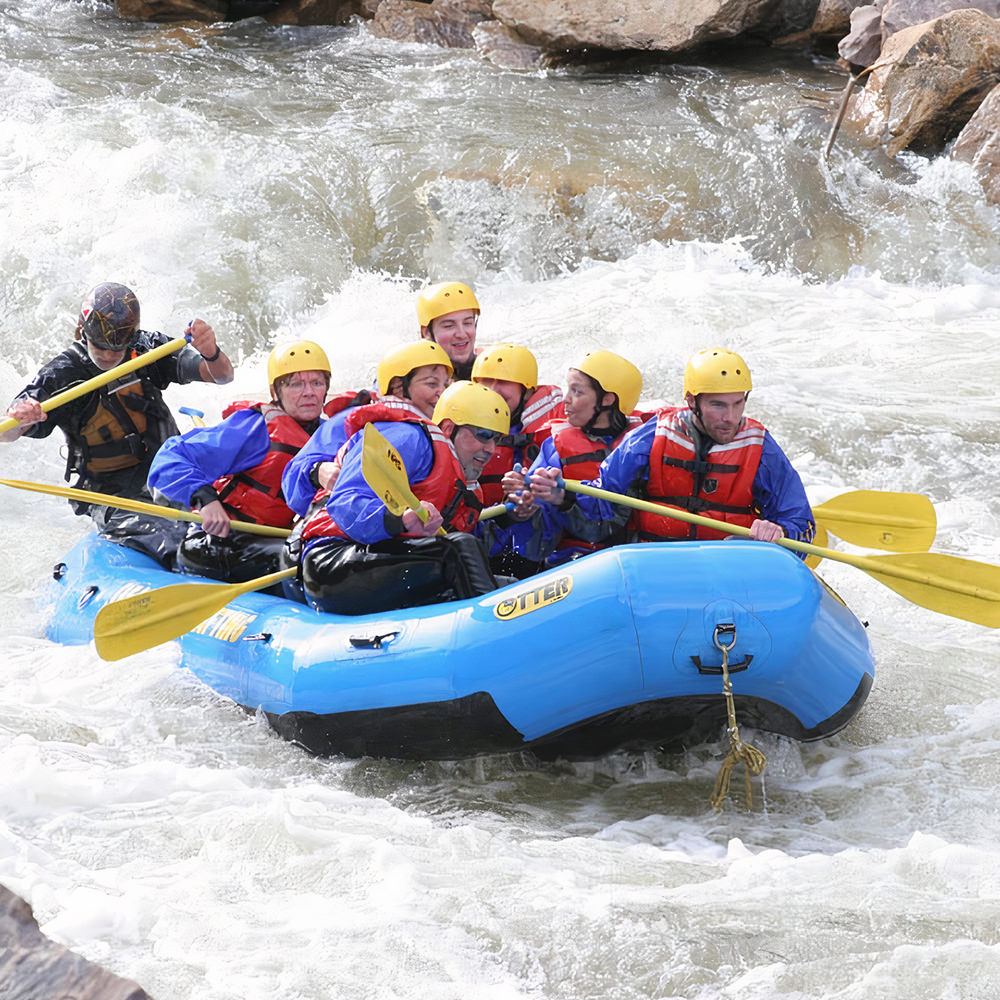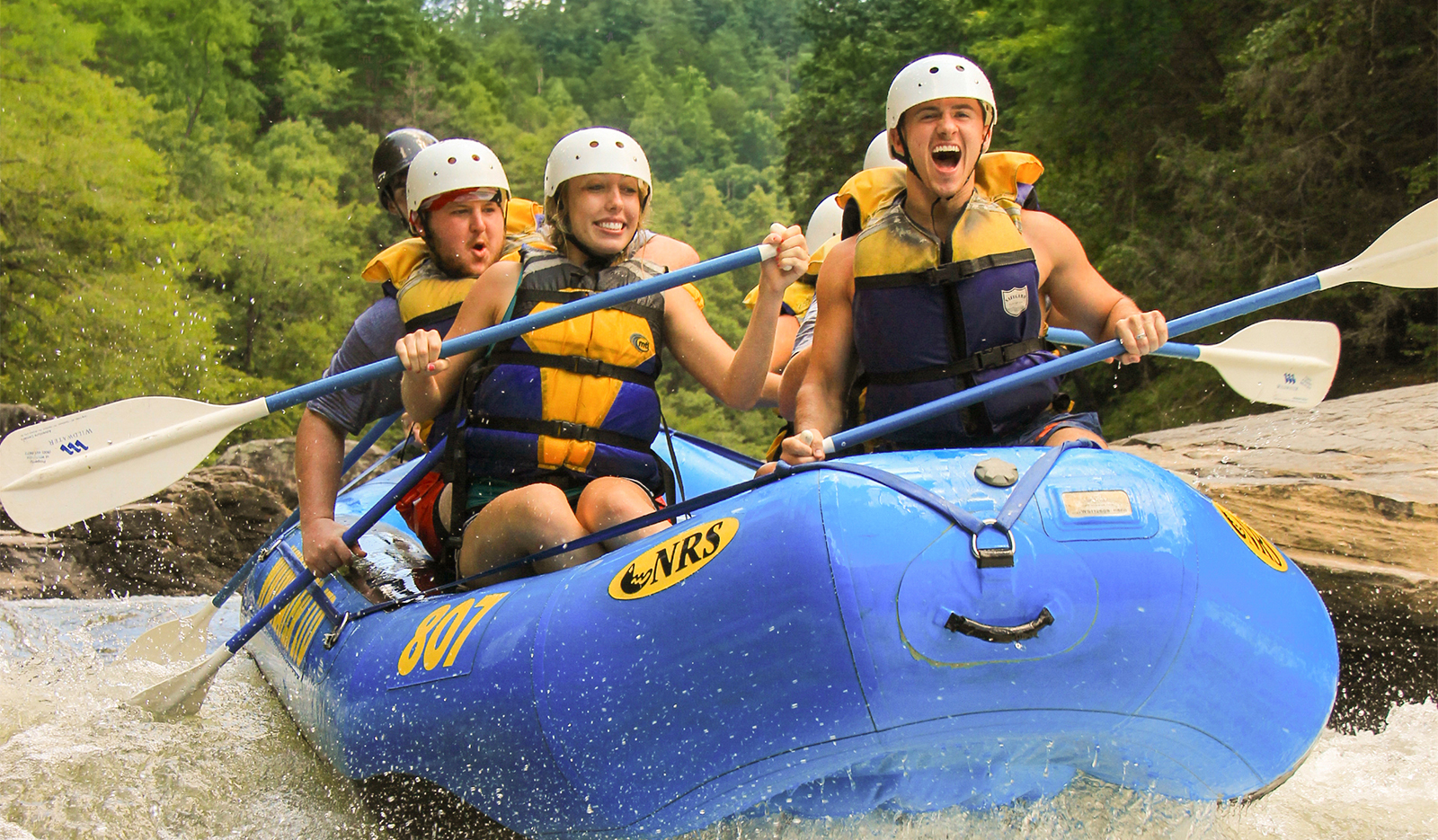Essential Skills for Water Rafting
Grasping the art of water rafting needs a combination of precise abilities and knowledge to browse the unpredictable currents of rivers, making it a thrilling yet possibly harmful activity. As lovers gear up to get started on their next experience, it is important to equip oneself with necessary competencies that go past just paddling. From understanding the details of river dynamics to swiftwater rescue methods and smooth team interaction, the trip down the river requires a blend of knowledge and flexibility. With security methods working as a keystone, participants are faced with a complex challenge that necessitates a thorough method and steady emphasis.
Paddling Strategies
Understanding effective paddling techniques is vital for browsing water boatings safely and effectively. One fundamental technique is the forward stroke, where paddlers dip the blade fully into the water and draw it back together with the boating to generate propulsion.
In addition to the forward stroke, the draw stroke is crucial for making fast changes or drawing the raft closer to an object. By placing the paddle blade vertical to the water's surface area and pulling the water in the direction of the boating, paddlers can effectively change the vessel's instructions. The backstroke serves as a beneficial tool for backing up or slowing down the plethora when needed.
River Reading
Reliable paddling techniques, such as the forward stroke and attract stroke, play an essential function in interpreting and navigating river currents, an ability called river reading. River analysis involves the capacity to evaluate the rate, depth, and instructions of the water flow to make educated choices while navigating rapids. By recognizing how the water relocates around challenges and with various channels, rafters can choose the very best course to safely go across the river.
One key aspect of river analysis is recognizing different kinds of currents, including swirls, waves, and hydraulics, and understanding exactly how they can affect the plethora. Eddies, as an example, are locations where the water moves in a circular activity, usually supplying opportunities for rest or critical maneuvers. Waves can suggest the visibility of rocks or barriers, calling for fast adjustments in paddling strategy. Hydraulics, generally known as "openings," are areas where water recirculates back upstream, positioning potential dangers to rafts.
Mastering the skill of river analysis is essential for pleasurable and risk-free rafting experiences, allowing paddlers to browse challenging waters with self-confidence and accuracy.

Swiftwater Rescue
Recognizing swiftwater rescue strategies is essential for water rafting fanatics to react effectively in emergency circumstances on fast-flowing rivers. Swiftwater rescue includes a collection of specialized abilities and knowledge targeted at safely removing people from swift-moving water. One vital element of swiftwater rescue is acknowledging the threats existing in fast-flowing rivers, such as strainers, undercut rocks, and strong currents, to intend and carry out successful rescue procedures.
Correct devices is crucial for swiftwater rescue, consisting of toss bags, rescue ropes, helmets, and personal flotation devices. Rafting lovers need to be skilled at utilizing this tools in high-stress scenarios to guarantee the safety and security of themselves and others. In addition, swiftwater rescue strategies often involve teamwork and coordination among rafters to visit our website perform complicated rescue maneuvers efficiently.
Learning swiftwater rescue is highly recommended for people participating in water rafting tasks, as it furnishes them with the required skills to handle emergency situations quickly and effectively. White Water Rafting Colorado. By comprehending and practicing swiftwater rescue methods, water rafting fanatics can improve their security and that of their fellow rafters on tough river explorations
Team Interaction
Efficient teamwork in water rafting counts greatly on seamless communication among employee to make sure coordinated and safe navigating through tough river problems. Clear and concise communication is critical for the success of any rafting exploration. Staff member must have the ability to properly convey vital info such as paddling commands, caution signals, and navigational directions.
In the fast-paced and often unforeseeable environment of river rafting, exact and timely interaction can imply the distinction in between a prospective calamity and a successful Read Full Article run - White Water Rafting Colorado. Each staff member plays an important role in the general interaction process, whether it be paying attention diligently to the guide's instructions, passing on info to other paddlers, or signaling for help when needed
Establishing a typical language and interaction system prior to hitting the water is crucial. This guarantees that everyone gets on the very same page and comprehends just how to communicate effectively throughout the rafting journey. By fostering a culture of open communication and common regard, rafting groups can enhance their performance and security on the river.

Safety Protocols
In the context of water rafting, the structure of group interaction established during explorations is further strengthened via stringent adherence to safety procedures. Security protocols are critical in making certain the wellness of both rafters and guides during water rafting tours.
Another key security procedure is the comprehensive rundown supplied by overviews prior to getting started on a rafting trip. This briefing commonly includes information on paddling techniques, what to do in case of various emergencies, and signals used for communication throughout the journey. Additionally, it is necessary to have actually marked safety and security kayakers accompanying the group to provide immediate aid if required. By purely adhering to these security protocols, water rafting trips can be both risk-free and exhilarating for weblink all participants involved.
Final Thought
Finally, understanding important abilities for water rafting is crucial for a satisfying and risk-free experience on the river. Paddling techniques, river analysis, swiftwater rescue, team interaction, and security protocols are all necessary components that add to a successful rafting journey. By developing these abilities, rafters can navigate difficult waters with confidence and ensure the safety of themselves and their staff member.
Grasping the art of water rafting requires a combination of accurate skills and expertise to navigate the unforeseeable currents of rivers, making it a thrilling yet possibly dangerous task. By putting the paddle blade perpendicular to the water's surface area and pulling the water towards the boating, paddlers can effectively alter the vessel's instructions.Understanding swiftwater rescue methods is crucial for water rafting lovers to react properly in emergency situations on fast-flowing rivers.Effective team effort in water rafting counts heavily on smooth communication amongst group members to make sure worked with and risk-free navigating through challenging river conditions.In final thought, understanding necessary abilities for water rafting is essential for a enjoyable and safe experience on the river.